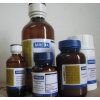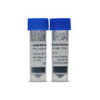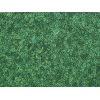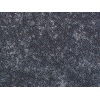
产品详情
颗粒酶A(GZMA)重组蛋白
来源原核表达
宿主E.coli
内毒素水平<1.0EU/μg(LAL法测定)
亚细胞定位Secreted; Cytoplasmic granu
预测分子量27.2kDa
实际分子量-(差异分析请参阅说明书)
片段与标签Ile29~Val260 (Accession # P11032) with N-terminal His Tag
缓冲液成份磷酸盐缓冲液(pH7.4,含有 0.01% SKL, 1mM DTT, 5% Trehalose和Proclin300.)
性状冻干粉
纯度> 97%
等电点9.4
颗粒酶A(GZMA)重组蛋应用SDS-PAGE; WB; ELISA; IP
Recombinant Granzyme A (GZMA)
Organism Species: Mus musculus (Mouse)
Instruction manual
FOR IN VITRO USE AND RESEARCH USE ONLY
NOT FOR USE IN CLINICAL DIAGNOSTIC PROCEDURES
9th Edition (Revised in Jul, 2013)
[ PROPERTIES ]
Residues: Ile29~Val260 (Accession # P11032), with
N-terminal His-Tag.
Host: E. coli
Subcellular Location: Secreted; Cytoplasmic
granule. Purity: >95%
Endotoxin Level: <1.0EU per 1μg
(determined by the LAL method).
Formulation: Supplied as lyophilized form in PBS,
pH7.4, containing 5% sucrose, 0.01% sarcosyl.
Predicted isoelectric point: 9.4
Predicted Molecular Mass: 27.2kDa
Applications: SDS-PAGE; WB; ELISA; IP.
(May be suitable for use in other assays to be determined by the end user.)
颗粒酶A(GZMA)重组蛋[ USAGE ]
Reconstitute in sterile PBS, pH7.2-pH7.4.
[ STORAGE AND STABILITY ]
Storage: Avoid repeated freeze/thaw cycles.
Store at 2-8oC for one month.
Aliquot and store at -80oC for 12 months.
Stability Test: The thermal stability is described by the loss rate of the target
protein. The loss rate was determined by accelerated thermal degradation test,
that is, incubate the protein at 37oC for 48h, and no obvious degradation and
precipitation were observed. (Referring from China Biological Products Standard,
which was calculated by the Arrhenius equation.) The loss of this protein is less
than 5% within the expiration date under appropriate storage condition.
颗粒酶A(GZMA)重组蛋[ SEQUENCES ]
The target protein is fused with N-terminal His-Tag, its sequence is listed below.
MGHHHHHHSGSEF-II GGDTVVPHSR PYMALLKLSS NTICAGALIE KNWVLTAAHC
NVGKRSKFIL GAHSINKEPE QQILTVKKAF PYPCYDEYTR EGDLQLVRLK KKATVNRNVA
ILHLPKKGDD VKPGTRCRVA GWGRFGNKSA PSETLREVNI TVIDRKICND EKHYNFHPVI
GLNMICAGDL RGGKDSCNGD SGSPLLCDGI LRGITSFGGE KCGDRRWPGV YTFLSDKHLN
WIKKIMKGSV
[ REFERENCES ]
1. Ebnet K., et al. (1992) Genomics 13:502-508. 2. Hershberger R.J., et al. (1992) J. Biol. Chem. 267:25488-25493. 3. Jenne D.E., Tschopp J. (1988) Immunol. Rev. 103:53-71. 4. Simon H.G., et al. (1988) Eur. J. Immunol. 18:855-861.




